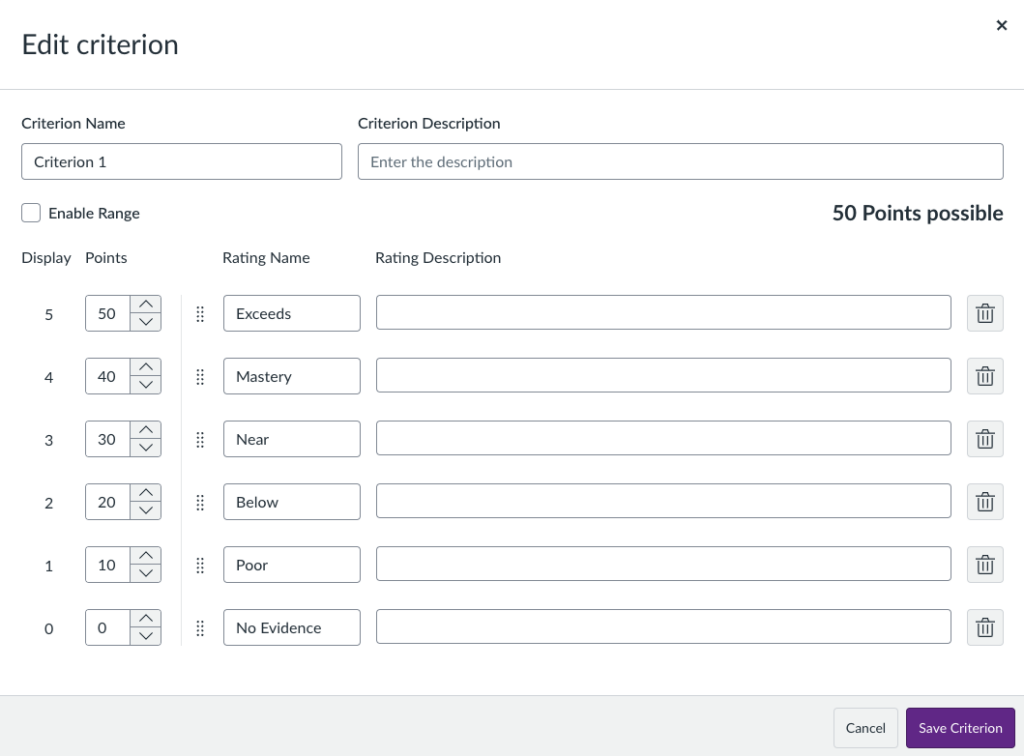The rubric feature in Canvas is a powerful tool for assessment and marking, but there are a few key differences compared to how rubrics worked in Blackboard. This short guide highlights some of those differences and offers practical tips to help you get the most out of using rubrics in Canvas.
Transitioning from TurnItIn Rubrics to Canvas Rubrics
As part of our move to Canvas, the way we use Turnitin is changing. All assignments will now be submitted and marked through the Canvas assignment interface, with Turnitin used only as a plagiarism-checking add-on. You can read more about these changes in the following guide:
How to use TurnItIn Plagiarism Framework
One important consequence of this change is that rubrics created in Turnitin cannot be transferred automatically to Canvas. Any existing Turnitin rubrics will need to be rebuilt manually within the Canvas interface.
For support with creating rubrics in Canvas, see the guides below:
Canvas Essentials: Rubrics
Getting Started with Canvas: Marking with Rubrics
Canvas: How do I add a rubric in a course?
Using a Rubric for Assignment Grading
To have your rubric automatically calculate and apply the final grade for an assignment, you must enable the “Use this rubric for assignment grading” setting.

If this setting is not enabled, the rubric score will not transfer to the grade field—you’ll need to enter the grade manually.
When this setting is enabled ✅
The instructor completes the rubric as usual.
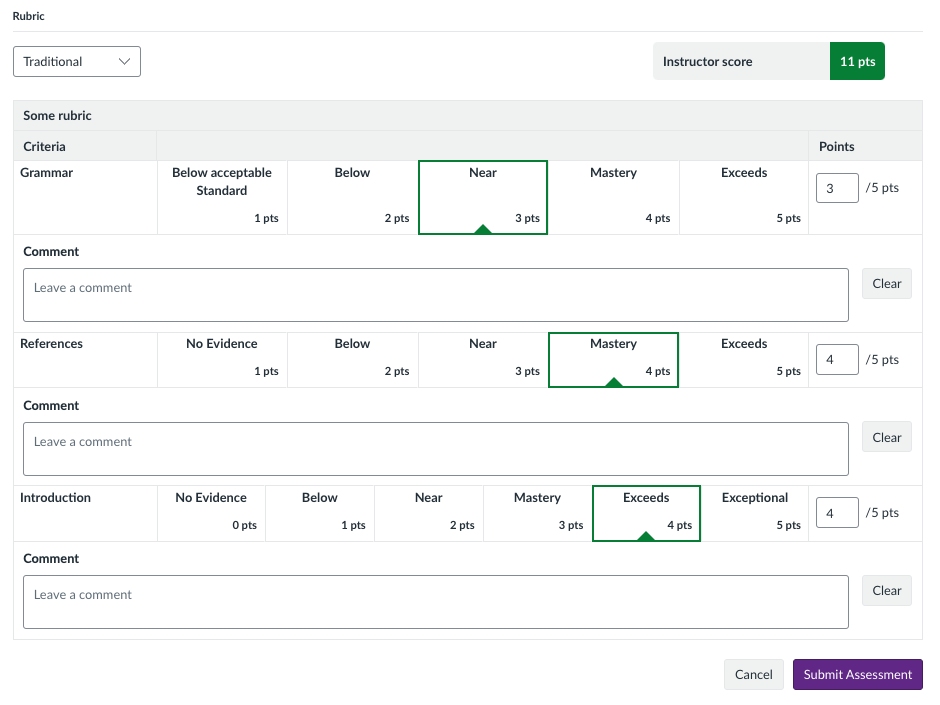
Once submitted, the grade is automatically calculated based on the rubric and applied to the assignment.

When this setting is not enabled ❌
The instructor still completes the rubric as usual.
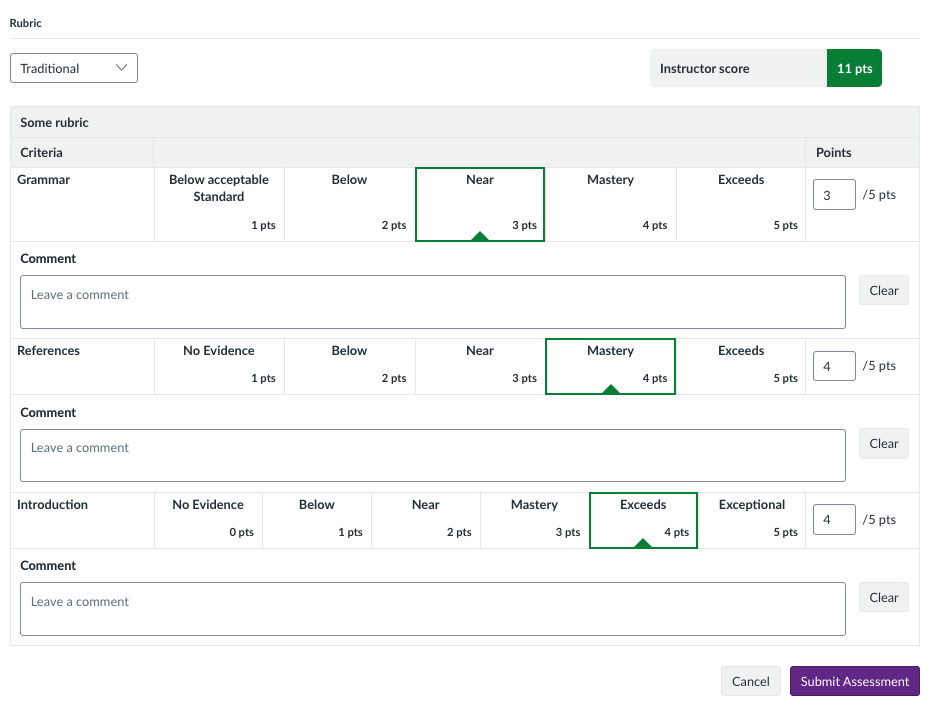
However, the grade is not transferred, and you’ll need to manually enter the final score.

Rubrics with Score Ranges
If your rubric uses score ranges instead of fixed point values, selecting a rating will automatically assign the highest point value in that range by default.
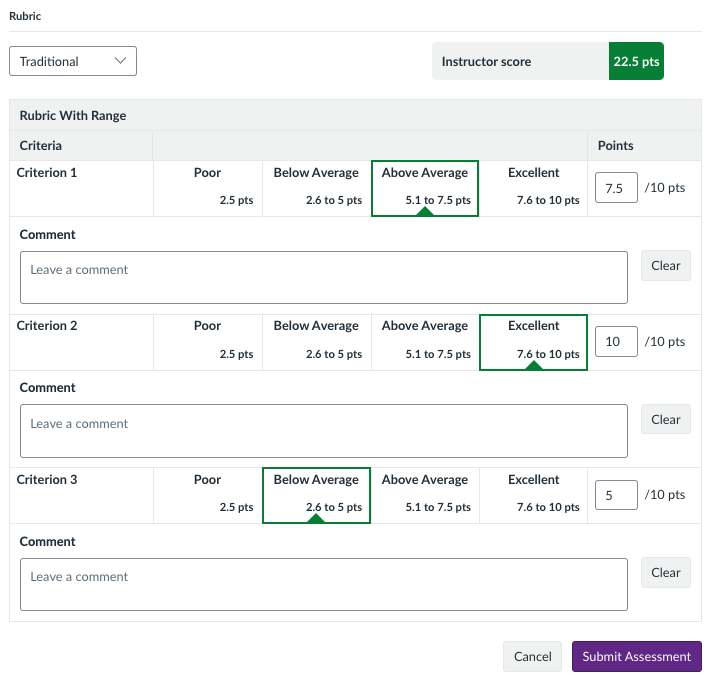
If you want to assign a different score within the range, you can manually edit the points field, and the total will update automatically to reflect your change.
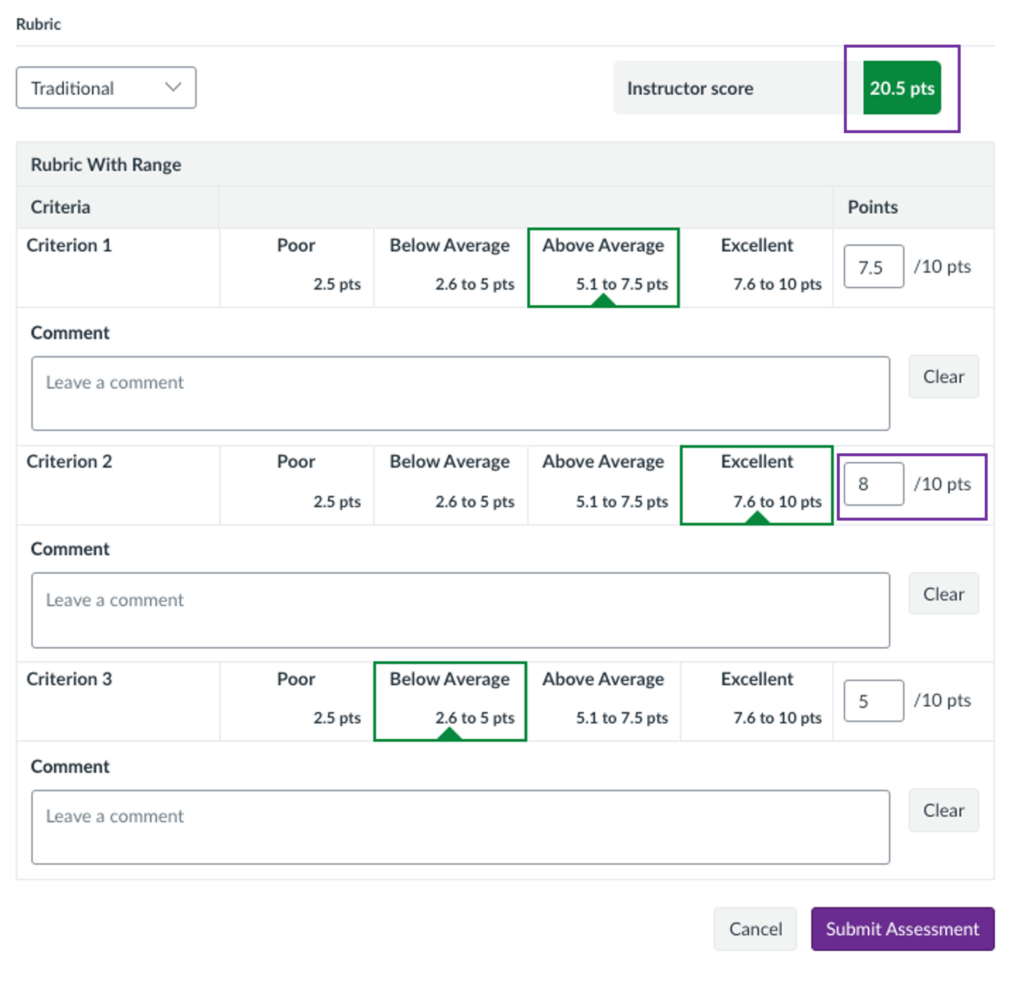
If you change the value in the points field to one that falls within a different rating range, the associated rating will update automatically to reflect the new point value.
Adapting Weighted Rubrics for Canvas
If you’re using percentage-weighted rubrics in TurnItIn or Blackboard, you’ll need to adapt them to work with the points-based system in Canvas. This is because Canvas does not support percentage weighting for rubric criteria. Instead, you’ll need to assign proportional point values to each criterion. For example:
Percent Weighted Rubric | Canvas Points-Based Equivalent |
Criterion 1 – 50% Weighting | Criterion 1 – 50 Points Total |
Criterion 2 – 30% Weighting | Criterion 2 – 30 Points Total |
Criterion 3 – 20% Weighting | Criterion 3 – 20 Points Total |
While percentage totals in Turnitin and Blackboard must equal 100%, this is not required in Canvas. You can choose any total point value, as long as the proportions reflect your intended weighting.
Once you’ve assigned total point values for each criterion, you can then configure the individual performance levels within each one by assigning point values as normal.
